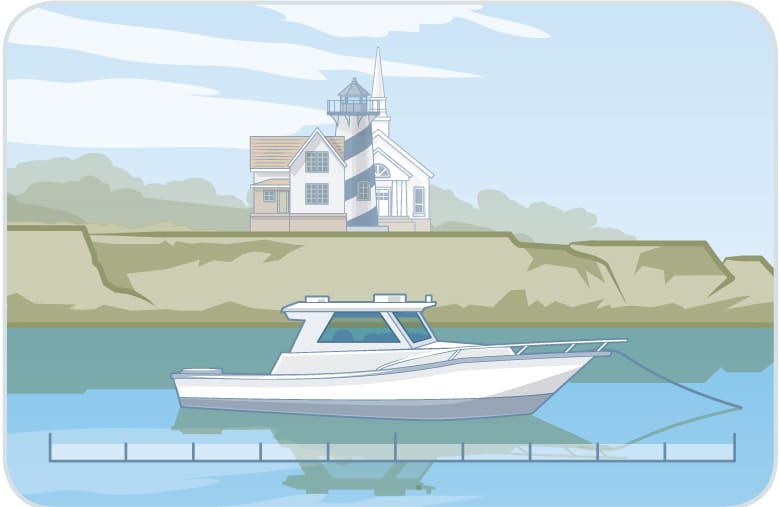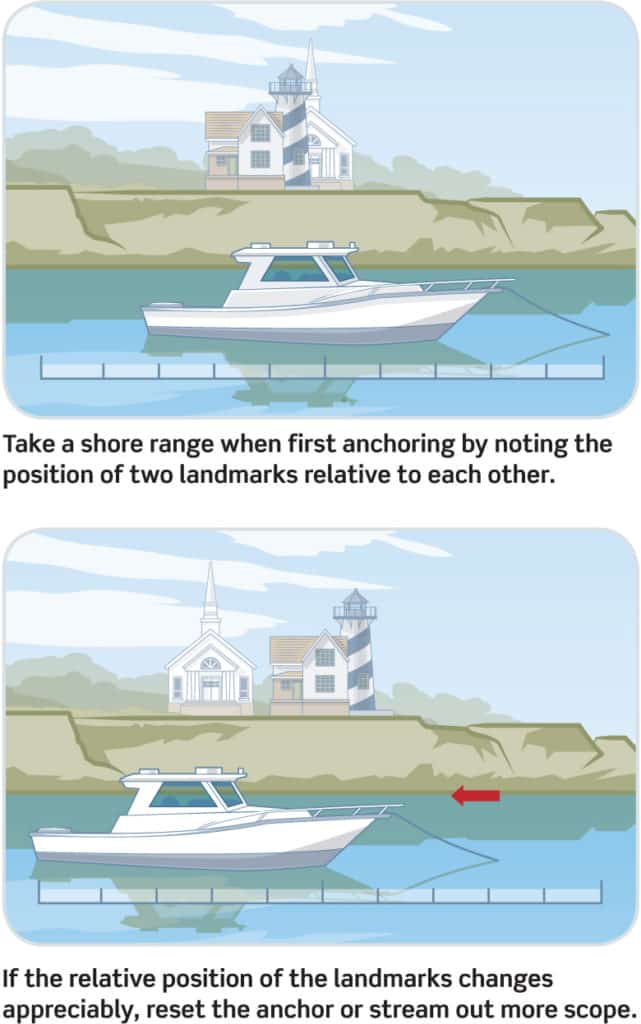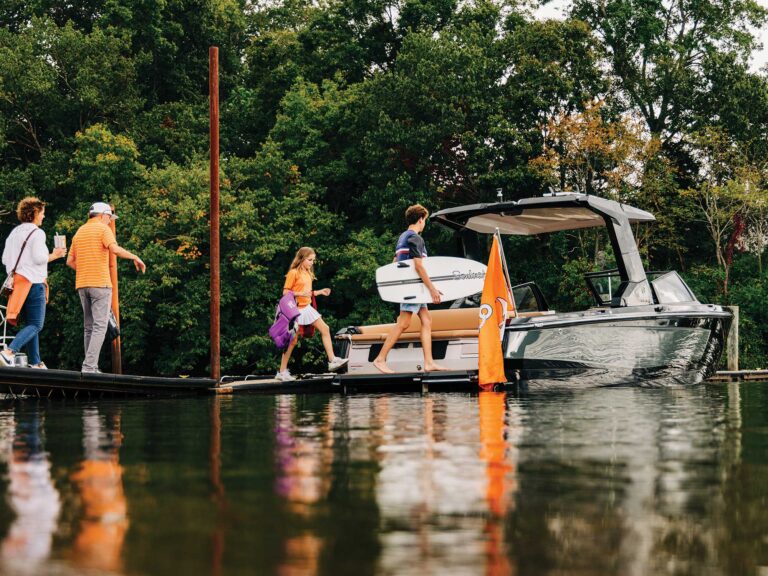Most boaters know not to anchor in the middle of a navigable channel or fairway. But not every anchoring scenario is so cut and dried. How’s your anchoring etiquette?

Anchoring Etiquette
First In Sets the Precedent
Let’s say you motor to a cozy cove for a picnic. Rounding the headland, you see another boat already anchored, swinging by a single hook. Etiquette dictates that you follow suit, deploying a single anchor off the bow at a location that will keep both boats clear of each other should wind or tide change direction.
How do you figure swing radius? You could solve for the adjacent angle of a right triangle, plugging in the two known values — water depth and amount of scope — to compute the unknown distance from boat to anchor. But the radius will change as the tide level changes, and different boats react differently to shifts in wind and current.
At one extreme, deep-keeled boats will react sooner to changes in current and later to changes in wind. At the other end of the spectrum, a planing craft with high freeboard will react sooner to changes in wind direction and later to changes in current. Furthermore, boats using an all-chain rode might safely lay to a scope ratio of 3:1, rather than the 7:1 typical of boats with a rope rode. (When figuring scope, remember to add the height from waterline to bow cleat to the depth of water).
So, some scrutiny of the other boat can help you make a more informed decision of where to drop the hook. The variables are limitless, making experience the best guide, but as a rule of thumb, drop anchor a distance at least equal to a 7:1 scope away from other boats.

Anchoring Etiquette
Be a Precedent Setter
Now let’s invert the scenario. Instead of a remote cove, you pull up to the local “hot spot” sandbar on a summer Saturday. In such places, it’s almost always the rule to deploy two anchors — one off the bow and one off the stern — which allows more boats to enjoy the anchorage. If you are first in, take the trouble to deploy the two anchors. Your protests of being “first in” are sure to be shouted down once the fleet arrives.
Don’t Rush to Go Clamming
Once the hook is set, don’t immediately hop overboard with a clamming basket. Doing so is a recipe for dragging into the other boats. Spend some time to be sure your anchor is holding by taking shore ranges. You’ll need at least two landmarks to make a “transit range.” A house in the foreground and a steeple behind it are a good example. As long as they stay lined up, your boat is securely anchored. If two shores are within sight, you can take a range on structures on either side of your boat. If your boat remains between them, you’re set.
Anchoring etiquette is vital to safety and enjoyment during a day on the hook.









